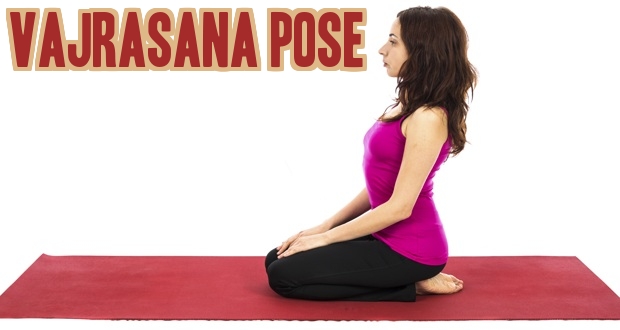Vajrasana comes from two words i.e. Vajra which means diamond or thunderbolt and asan means seat. Vajrasana pose is also known as Diamond Pose, Pelvic Pose, Thunderbolt Pose, Kneeling Pose or Adamantine Pose. This is a pose which forms the base of many other asans. To name a few are are Sudarshan Kriya Yoga, Bhastrika (pranayam) and Child Pose (Balasan).
Science Behind the Popular- Vajrasana
This is a steady and firm pose that can be challenging for beginners. It is a meditative pose, but those who achieve it, cannot be easily moved or shaken. You will need to conquer and fight over the pain in the legs that you may experience in the beginning as well as distractions and unrest in your mind to be able to master this pose and move into a meditative state. You will need to train yourself to sit very, very still and be ready to invest a lot of mental energy to be able to achieve it.
Once you have mastered the pose, you will want to do it again and again. And, the benefits this pose offer are surely plenty. It helps regulate the blood circulation in your lower pelvic region, something that not many poses can do. Yoga experts claim that this pose helps improve digestion and alleviates several tummy problems. But, how? When you sit on your legs, the blood flow to your legs reduces and increases in your digestive area, this boosts your digestive system and helps it function better.
Vajrasana is easier said than done. While it may look like an easy pose to assume, it takes a lot of determination and grit to remain motionless and still. You will not attain it in one go, and will have to try umpteen number of times before you master it. Read on to know how it is done:

How to Do Vajrasana?
- Sit on the floor on a mat or directly on the ground.
- Fold your legs and sit in such a manner such that your heel touches your butt.
- Place your hands on your lap exactly as shown in the figure above. You may let your palms face the sky as well.
- Hold the sitting pose for two minutes (to start with). You will feel a stinging pain in your feet if you are not habituated to sitting this way. You can stretch your legs and rest for a while and start again.
- Don’t give up. Sit for a minimum of two minutes. You should increase the minutes over time. It is even possible to sit on Vajrasana pose for almost half an hour.
It is said that the best time to do Vajrasana is just after having food, but you can do it at any time of the day. Note: If you feel intense pain in your feet, you can place a cushion underneath.
Do’s: Breathe normally like you always do, even while in this pose. Many people tend to breathe faster when practicing this pose.
Don’ts: Do not tense your body, while you lift your legs off the ground. Keep your body loose and free and make an effort to relax your body and mind.
Moving on to the second part, we will explain to you the benefits of doing vajrasana.
Benefits of Vajrasana
- It helps in digestion.
- Sitting in this pose helps in reduction of the hips.
- It helps in getting rid of constipation.
- It helps to fight stomach disorder.
- A few minutes of Vajrasana and you can feel the mind calming. Thus helps you in relaxing.
- It helps in increasing the blood circulation in the body.
- Yoga always helps in weight loss. So does vajrasana!
- Vajrasana is the pose in which many asans are done. Some of them have been named in the beginning of this article.
- It helps in curing urinary problem.
- It helps in making the lower body flexible.
- It also helps in combating acidity.
- It helps in strengthening the sexual organs.
- It helps in toning of body muscles like the hips, thighs and the calf muscles.
- It helps in curing various body ailments like vericose veins and joint pains.
- This pose is a magic pose for people suffering from arthritis as it acts as a painkiller.
Do not try Vajrasana if:
- You suffer from severe knee pain.
- You have had a recent surgery on your waist or legs.
- You are in your last trimester of pregnancy.
Important Pointer To Know Before You Do Vajrasna:
- If you feel an excruciating pain in the ankles when attempting the asana, release yourself from the pose. Gently massage your ankle with your hands and try after a few days.
- If you are pregnant, keep your knees slightly apart when practicing this asana. This will ensure there is less pressure exerted on your abdomen.
- If you suffer from any sort of spinal column ailments on the lower vertebrae, this asana is not for you.
- If you suffer from hernia, intestinal ulcers or other ailments related to your small or large intestine, you can try this asana but under the guidance of an experienced yoga instructor.
Now that you know how to do the Diamond pose, what are you waiting for? Try it out today! This is one of the best asanas that combines benefits such as strengthening the body while helping you improve concentration and focusing your mind. While it may be easy to assume, it can be challenging to keep your mind and body perfectly still. Do not let this deter you, try and try and try until you succeed, for it is worth the efforts!